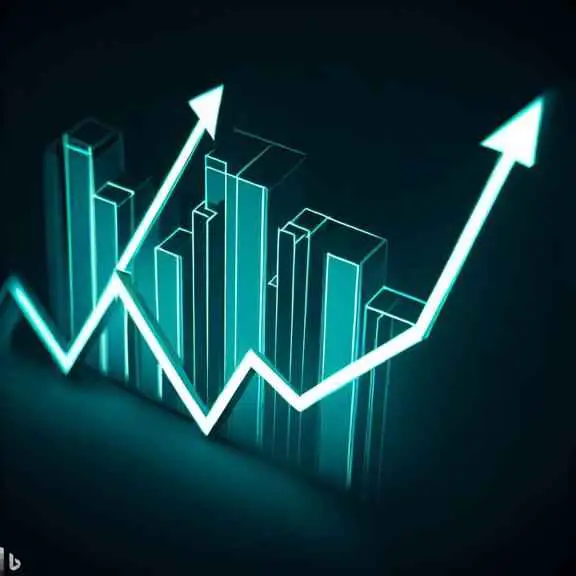Paragraph on
Price Hike
for all Class, Words
by Economics on
Price hike is a phenomenon that affects people all around the world. It occurs when there is an increase in the general price level of goods…, please continue reading.

Table of Content
Ad
The Paragraph on Price Hike
Ad
Price hike is a phenomenon that affects people all around the world. It occurs when there is an increase in the general price level of goods and services. Inflation, government policies, supply and demand, and exchange rates are among the many reasons why prices hike up. Inflation occurs when the value of money decreases, while the value of goods and services stay the same, leading to an increase in prices. Government policies, such as taxes and tariffs, can increase the cost of goods and services, leading to a price hike. Supply and demand also affects price, as an increase in demand or a decrease in supply can lead to an increase in price. Exchange rates also play a part, as a decrease in the value of a country鈥檚 currency can lead to a price hike.
The consequences of price hike are felt by different groups of people. For consumers, price hike means that they have to spend more money to purchase the same goods and services they used to buy for less. This can be detrimental to low-income households, as they have less disposable income to spend on basic necessities. Businesses also feel the effects of price hike, as their production costs increase, causing them to increase their prices to maintain their profits. This can lead to a decrease in demand for their products or services, leading to lower revenue and profits. Governments can also feel the effects of price hike, as it can lead to an increase in the cost of social welfare programs, increase the budget deficit, or lead to a decrease in economic growth.
To combat price hike, governments have to implement policies that can help to stabilize prices. They can use monetary policies to control the money supply, or fiscal policies to control taxes and government spending. Governments can also choose to subsidize the production of essential goods and services, such as food and medicine, to lower prices for consumers. Businesses can also work to reduce their production costs by finding ways to increase efficiency or by leveraging technology to lower their overhead costs.
In conclusion, price hike is a complex phenomenon that stems from various causes. The consequences of price hike can be far-reaching, affecting different groups of people. To mitigate the effects of price hike, governments and businesses must work together to identify and implement policies that will help to stabilize prices and lower costs.

Questions about Price Hike
Ad
Questions and Answers:
Q: What is price hike? A: Price hike is an increase in the general price level of goods and services.
Q: What are the causes of price hike? A: Causes of price hike include inflation, government policies, supply and demand, and exchange rates.
Q: How does inflation contribute to price hike? A: Inflation occurs when the value of money decreases while the value of goods and services stays the same, leading to an increase in prices.
Q: What is the consequence of price hike for consumers? A: Price hike means consumers spend more money to purchase the same goods and services they used to buy for less.
Q: What is the consequence of price hike for businesses? A: Price hike increases a business鈥檚 production costs and can lead to lower revenue and profits if they increase their prices to maintain profits.
Q: What is the consequence of price hike for governments? A: Price hike can increase the cost of social welfare programs, increase the budget deficit, or lead to a decrease in economic growth, which affects governments.
Q: What policies do governments implement to mitigate the effects of price hike? A: Governments can use monetary or fiscal policies to control the money supply, taxes, and government spending. They can also subsidize the production of essential goods and services.
Q: How do businesses reduce their production costs? A: Businesses can find ways to increase efficiency or leverage technology to lower their overhead costs.
Q: What is an example of essential goods and services? A: Essential goods and services include food and medicine.
Q: What is the definition of government policy? A: Government policy refers to the strategies, rules, and measures that a government adopts to achieve specific socio-economic goals.

Vocabulary related to Price Hike
Ad
Vocabulary Words:
-
Inflation (n.) - a general increase in prices and fall in the purchasing value of money. (Usage: Inflation increases the cost of living.) Synonyms: escalation, surge, rise Antonyms: deflation, recession
-
Supply (n.) 鈥 the amount of a particular product that a business or market can offer for sale. (Usage: The supply of oil has decreased.) Synonyms: provision, stock, amount Antonyms: demand, shortage, scarcity
-
Exchange rates (n.) 鈥 the value of one currency for the purpose of conversion to another. (Usage: The exchange rate between the euro and dollar has changed.) Synonyms: conversion rate, currency rate Antonyms: steady rate
-
Fiscal policies (n.) 鈥 the means by which a government adjusts its levels of spending in order to influence the economy. (Usage: The government uses fiscal policies to stimulate the economy.) Synonyms: economic policies, financial measures
-
Subsidize (v.) 鈥 to support financially. (Usage: The government subsidizes the arts.) Synonyms: finance, support Antonyms: penalize, deny
-
Overhead costs (n.) 鈥 the expenses incurred in running a business that are not directly attributed to a product or service. (Usage: The overhead costs for a business includes rent, utilities, and salaries.) Synonyms: indirect costs, operating expenses Antonyms: direct costs
-
Mitigate (v.) 鈥 to make less severe, harmful, or painful. (Usage: To mitigate air pollution, the government introduced stricter regulations.) Synonyms: alleviate, reduce Antonyms: worsen, aggravate
-
Revenue (n.) 鈥 income generated from a business’s activities. (Usage: The company’s revenue has increased by 10% this year.) Synonyms: earnings, income Antonyms: expenditure
-
Disposable income (n.) 鈥 income available to be spent or saved after taxes have been paid. (Usage: Low-income households often have very little disposable income.) Synonyms: spendable income Antonyms: fixed income
-
Budget deficit (n.) - a shortfall between revenue and expenditure. (Usage: The UK has a budget deficit of 2% of GDP.)
Inflation (n.) - a general increase in prices and fall in the purchasing value of money. (Usage: Inflation increases the cost of living.) Synonyms: escalation, surge, rise Antonyms: deflation, recession
Supply (n.) 鈥 the amount of a particular product that a business or market can offer for sale. (Usage: The supply of oil has decreased.) Synonyms: provision, stock, amount Antonyms: demand, shortage, scarcity
Exchange rates (n.) 鈥 the value of one currency for the purpose of conversion to another. (Usage: The exchange rate between the euro and dollar has changed.) Synonyms: conversion rate, currency rate Antonyms: steady rate
Fiscal policies (n.) 鈥 the means by which a government adjusts its levels of spending in order to influence the economy. (Usage: The government uses fiscal policies to stimulate the economy.) Synonyms: economic policies, financial measures
Subsidize (v.) 鈥 to support financially. (Usage: The government subsidizes the arts.) Synonyms: finance, support Antonyms: penalize, deny
Overhead costs (n.) 鈥 the expenses incurred in running a business that are not directly attributed to a product or service. (Usage: The overhead costs for a business includes rent, utilities, and salaries.) Synonyms: indirect costs, operating expenses Antonyms: direct costs
Mitigate (v.) 鈥 to make less severe, harmful, or painful. (Usage: To mitigate air pollution, the government introduced stricter regulations.) Synonyms: alleviate, reduce Antonyms: worsen, aggravate
Revenue (n.) 鈥 income generated from a business’s activities. (Usage: The company’s revenue has increased by 10% this year.) Synonyms: earnings, income Antonyms: expenditure
Disposable income (n.) 鈥 income available to be spent or saved after taxes have been paid. (Usage: Low-income households often have very little disposable income.) Synonyms: spendable income Antonyms: fixed income
Budget deficit (n.) - a shortfall between revenue and expenditure. (Usage: The UK has a budget deficit of 2% of GDP.)
Synonyms: revenue shortfall Antonyms: budget surplus

Structure of the sample "Price Hike" paragraph
Ad
Cohesion and Coherence:
The paragraph presents a well-structured and coherent argument by first defining the term “price hike” and then discussing the various causes and consequences of the phenomenon. The paragraph uses cohesive devices such as transition words and phrases (“inflation, government policies, supply and demand, and exchange rates”, “in conclusion”) to connect each sentence to the previous one and create a logical flow of ideas. The use of examples and statistics also adds to the coherence of the paragraph. Overall, the paragraph is well-organized and skillfully communicates its ideas to the reader.
